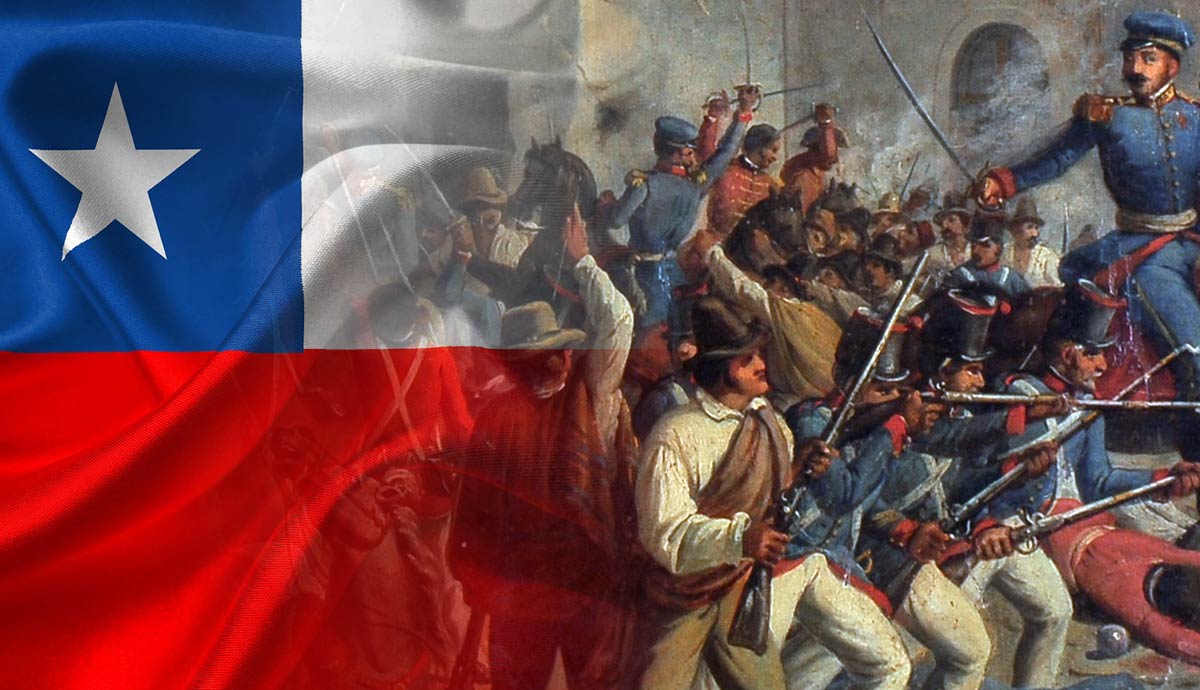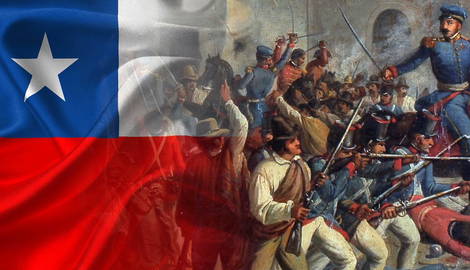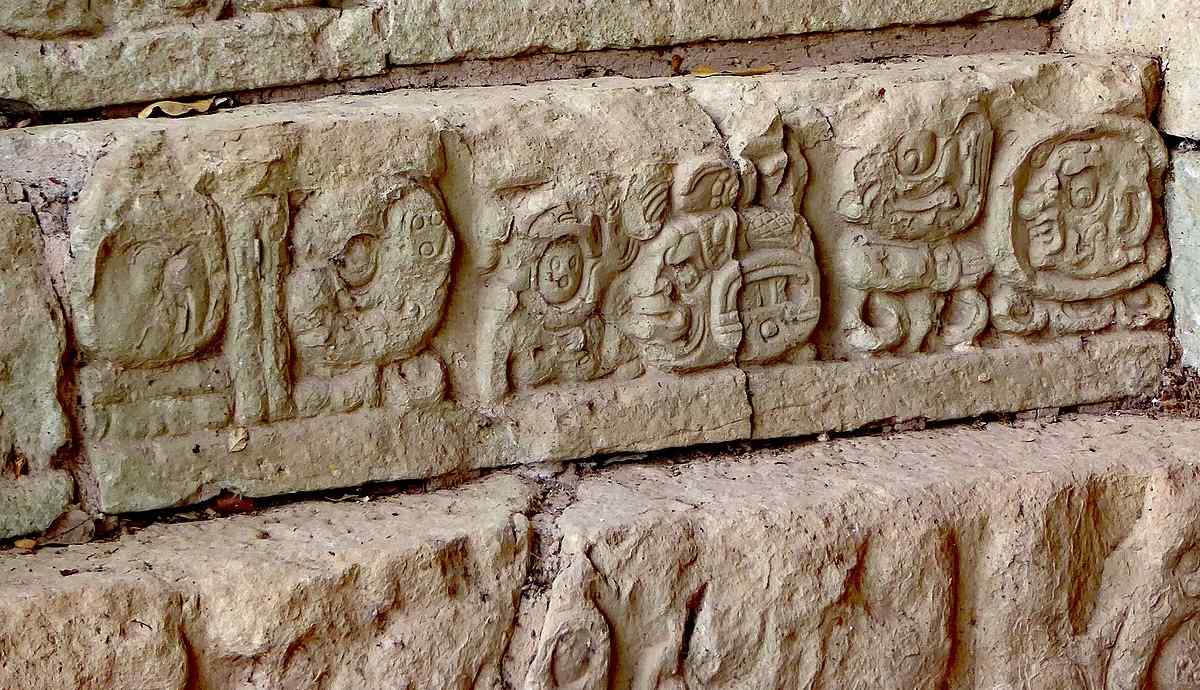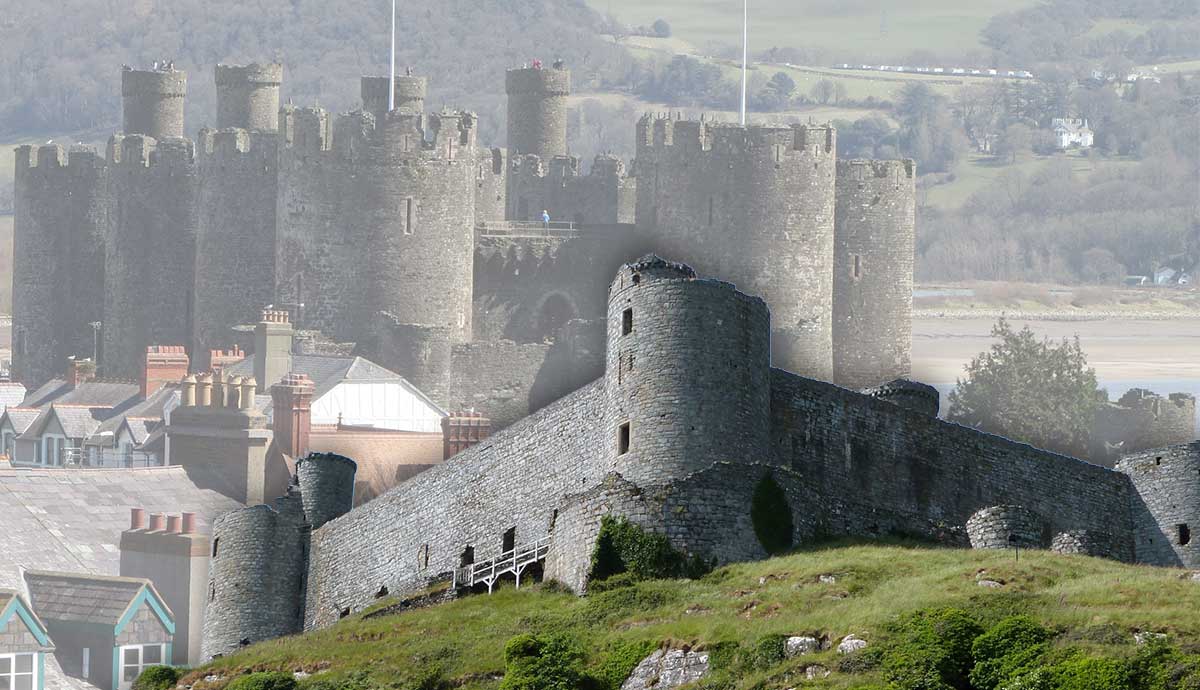
Like all countries subjected to colonization, Chile’s history is a long tale of bloody struggles. From pre-Columbian times through the colonial period, into the era of revolutions, and further into the 20th and 21st centuries, Chile has battled for prosperity.
While many can look towards Chile today as a model for success, Chile also serves as a lesson in the vicissitudes of changing fortunes and the barbarism to which humanity is capable of stooping.
This is the story of Chile.
Pre-Columbian Chile

Before the Spanish arrived, Chile was home to around half a million people. These people lived in small, scattered tribes and had no governmental unification. Their survival was based mainly on hunting and fishing, with a fair amount of agriculture. In the south, the groups were more likely to be nomadic.
Conflict at this time was not uncommon. The people to the west of the southern Andes fought against the Chincha and then the Quechua, which formed part of the Inca Empire, an entity that was expanding but had suffered turmoil in the form of a civil war around the time of Spanish arrival.
In the late 15th century, the Inca Empire conquered what is now northern Chile but was halted by the Mapuche people, who lived further to the south. The Inca Empire then suffered the devastating effects of a civil war shortly before the Spanish arrived and put an end to the Indigenous way of life.
Spanish Conquest

In 1526, the Spanish arrived and changed the dynamic of South America forever. With their sights set on conquest, the Incan Empire fell rapidly in 1533 to the Conquistadors under the command of Francisco Pizarro. The Spanish then moved their attention south and attempted to take control of the long strip of land between the Pacific and the western edge of the Andes.
Under the command of conquistador Pedro de Valdivia, the forceful conquest of what is now Chile began. In 1541, he founded the town of Santiago, now Chile’s capital and biggest city. The territory under Spanish rule expanded towards the north and the south and was known as New Extremadura. As the Spanish pushed southwards, there was increased Indigenous resistance, known as the Arauco War.
In 1553, the Mapuche, under the leadership of a chief named Lautaro, rose up in revolt and captured and killed Valdivia. By the end of the 1550s, the land south of Santiago had been consolidated under the leadership of Governor Don García Hurtado de Mendoza. The Araucanians, however, still managed to wage a low-intensity guerilla war against the Spanish until the 1880s.
The Colonial Era Begins

Chile was not rich in minerals, but it did have productive soil, and the colonial period began with extensive efforts in agriculture. Production, however, was not enough to cover the costs of its settlement, and at this point, the colony was an unattractive prospect for those seeking their fortune. By the end of the 16th century, there were only a few thousand Spanish settlers and very few enslaved Africans. To add to the difficulties, the Indigenous people proved unreliable as a labor source.
For these reasons, Chile was not profitable for the Spanish Crown, and it had to be subsidized to be kept part of the empire. Security was a huge issue, and vast sums of money had to be spent to keep Spanish property safe from Indigenous militants.
Bordered by the Pacific Ocean to the west and impassable mountains to the east, Chile was isolated and difficult to reach. As a result, it generated a distinct character that was markedly different from that of many other South American colonies. One example of this difference was the low number of slaves brought in from Africa and the higher proportion of European settlers.
Despite its isolation, the northern end of Chile was in close contact with the territories of Bolivia and Peru. Both countries started vying for their own place on the continent at a time when revolutionary sentiment was at a significantly high level. Chile would thus be drawn into the same cycle of revolution against Spanish control.
Road to Independence

The first spark for independence came during the Napoleonic Wars. Spain was unable to administer its colonies, especially after it was invaded by France. Chile, like other South American colonies, was forced to survive on its own, and as a result, these colonies developed a greater sentiment for autonomy. Chile was no exception.
In 1810, the governor-general was pressured to resign, and in his place, a junta was established to govern in the interim until another government could be established. Spain, however, would not stand idly by and watch its colony declare independence. In 1814, the crown sent an army to restore control of its colony. At the Battle of Rancagua, the Spanish reasserted their control. This ended the period in Chile known as la patria vieja (the old fatherland).

From 1814 to 1817, Spain took full control of Chile in a period known as the Reconquista. During this time, loyalists suppressed those with rebel intent. These efforts, however, simply drove more people to support the insurrection in Chile, and the Reconquista came to an end at the Battle of Chacabuco on February 12, 1817. Chilean independence leader Bernardo O’Higgins joined the armies of Argentinian leader José de San Martín, who helped several South American countries gain independence.
New Struggles

Thus began the six years known as the Patria Nueva, during which time independence leader Bernardo O’Higgins became the leader of Chile, declaring independence in 1818. With the armies of Spain dealt with, new struggles arose as liberals and conservatives vied for power in the country.
O’Higgins’ liberal reforms angered conservative elites within Chile, and he was forced to resign in 1823. The country was plunged into civil war, which lasted until 1830 with a conservative victory.
Later that decade, conflict would come to a head with a Bolivian-Peruvian alliance that threatened Chilean control of the Pacific. Chile declared war on their rivals and saw victory at the Battle of Yungay in 1839. General Manuel Bulnes, commanding the Chilean forces, became president.
Rule within Chile was still conservative, and liberal forces still kept pressure on the government to change.
More War & Expansion

A new conflict arose with the Chilean Civil War of 1851, in which the liberals were again defeated. However, it was clear that liberalization of Chilean society was necessary. It had become highly stratified and was a hotbed for further conflicts. President Manuel Montt addressed the issue by reducing the power of landowners and the church when he liberalized the constitution.
Despite defeating Bolivia and Peru in 1839, the countries were still in a state of high tension as they sought to gain control over vital resources. In 1879, Chile again went to war against Bolivia and Peru. This time, Chile not only triumphed but annexed vital resource-rich lands from Peru and Bolivia, cutting off Bolivia’s access to the sea in the process.
Meanwhile, the native Araucanians in the south were pacified, and at the end of the 19th century, Chile stretched over 2,500 miles north-south. Immigration to the south increased, and vital resources were exploited. Chile became a prime producer of nitrate, coal, and copper.
In 1891, another civil war erupted, this time between the government, which wanted to preserve the president’s authority, and a congressional junta, which sought to limit the president’s powers. After eight months, the congressional forces were victorious, thus beginning Chile’s parliamentary period.
Despite the changes, oligarchic rule continued, and a growing working class was excluded from political power.
Into the 20th Century

The parliamentary period came to an end in 1925 when a coup led by the working classes seized power and set up a junta. A new constitution was adopted, which protected the working classes and separated church and state.
In 1927, General Carlos Ibáñez del Campo seized power and ruled until 1931. The first years of his rule were successful, and the country flourished with money loaned from American banks. The Wall Street Crash of 1929, however, took its toll in Chile as well, and Del Campo lost popularity amongst a growing desire from the electorate for social change.
Democracy returned in 1932, and politics evolved similarly to how they evolved in many other Latin American countries. Parties formed coalitions around three political pillars: left, center, and right. This pattern was and still is known as the tres tercios (three-thirds). From 1938 to 1946, the country underwent massive change as a left-wing coalition reformed the country based on the New Deal in the United States implemented by Franklin D. Roosevelt.
Democracy flourished for several decades due to a dynamic system in which parties were able to shift alliances and form governments. In addition, a strong system allowed for the easy management of political compromises. This system worked well until Salvador Allende’s election in 1970 when he ran as the socialist candidate for the Popular Unity alliance.
Allende won a plurality but not a majority. This would not have been a problem had Allende not been openly Marxist. His political stance was something that the West felt compelled to counter, and the United States became involved in undermining Allende’s administration.
Pinochet

On September 11, 1973, Chile’s path of governance was violently redirected when a military coup was staged and toppled the socialist presidency of Salvador Allende, who committed suicide after a last stand at the presidential palace.
At the head of this coup was Augusto Pinochet, who ruled as a despot until 1990, when he was forced to step down as head of the government. During this time, Chilean governance was characterized by an intensely anti-Marxist ideology, and many thousands of suspected leftists were tortured and forced to work in labor camps, while witch hunts throughout the country led to the murder of thousands of others.
Spreading the anti-Marxist sentiment, Pinochet formed Operation Condor, a network of intelligence agencies across South America that persecuted left-leaning individuals. Chile, Bolivia, Paraguay, Uruguay, Argentina, Brazil, Peru, and Ecuador all cooperated in eliminating socialists, communists, and other leftists across the continent. All of this happened with the support of the CIA and the tacit support of several Western countries also involved in the fight against the influence of the Soviet Union.
Pinochet’s rule seemed so secure that he allowed for a referendum in 1988 to whether he should have another eight-year term in office. The results surprised him. Garnering only 44 percent of the vote, he was forced to hold elections and step down from his role as authoritarian dictator of Chile.
Pinochet retained the position of senator for life, but this was later rescinded as investigations of his crimes came to light. He died in 2006 before he could ever stand trial. It is estimated that up to 3,200 people were murdered in Chile while 80,000 people were interned, and tens of thousands were tortured under Pinochet’s brutal regime.
Return to Democracy

In 2006, the same year as Pinochet’s death, Michelle Bachelet became Chile’s first woman president, ushering in an era of social change. She is still a leading voice for equality and human rights, and she was re-elected in 2013.
In the 21st century, Chile has undergone shifts in political power from center-left to center-right and back again. In 2020, amid widespread protests, a referendum was held to change the constitution from the one created by the Pinochet regime and enacted in 1980.
The referendum result was a resounding landslide to create a new constitution and set the country on a more progressive path for the future, one in which the gap between the rich and the poor can hopefully be addressed. Since then, two new drafts of the constitution have been drafted and then rejected by voters; the process has essentially been postponed until a new administration comes in.

Chile has a unique and turbulent history characterized by frequent conflict and passion for change. Over the centuries, vastly unequal societal dynamics have given rise to popular movements seeking to redress the problems inherent from the nation’s very beginnings.
While democracy seems firmly entrenched now, it is still subject to movements that threaten to upturn perceived injustices.
Chile’s story is not over, yet the country survives as a strong, independent nation with solid ideals and a passionate electorate.










